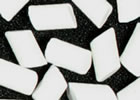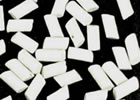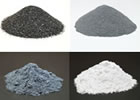Brown Jasper Tumbler Rough
An easy-to-tumble rough for the beginner.
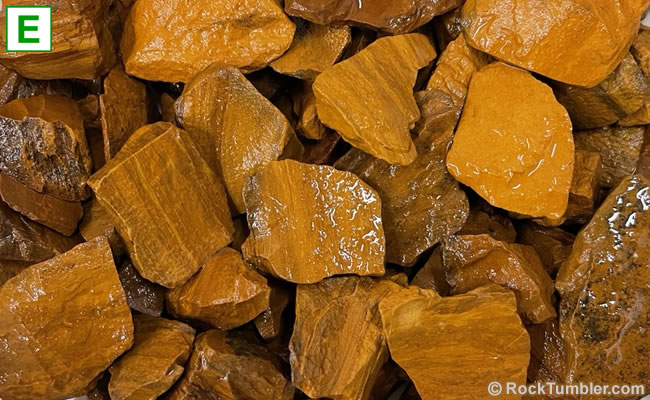
This photo shows a sample of this brown jasper tumbling rough, dumped into a colander and sprayed with water to reveal its slightly yellowish brown color. The pieces range in size from about 1/2 inch to 2 1/2 inches across their maximum dimension. Click on the image for a larger view. Many of the pieces have "flattish" shape that many people enjoy. Take a look at the tumbled stones in the photo below. Photo by Hobart King.
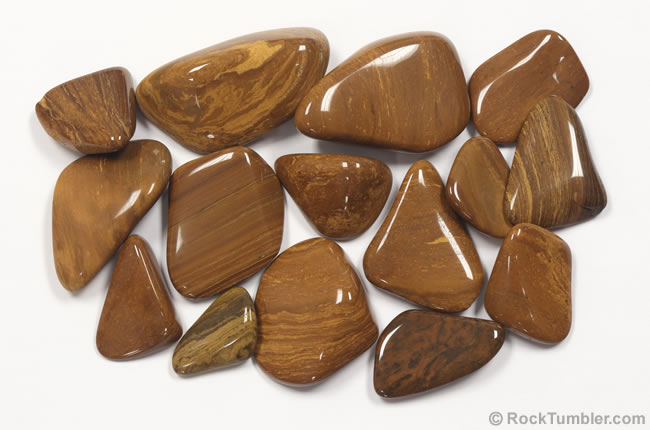
Adam tumbled a few batches of this jasper in small rotary tumblers (Thumler's A-R1 and A-R2) using our tumbling instructions for jasper and agate. The tumbled stones above are from one of the barrels that he tumbled. He tumbled them for two weeks in coarse grit, one week in medium, one week in fine, one week in TXP polish and then gave them 60 minutes of Ivory Soap burnishing. That extra week in coarse grit gave the stones a nicely rounded shape, and the TXP polish followed by burnishing produced a super bright luster.
We believe that this jasper formed by silicification of a layered sediment - perhaps a fine-grained silt. The layering seen in the tumbled stones is probably a relict texture from the original material. Tumbled stones by Adam Rittenhouse, photograph by Angela King.
We believe that this jasper formed by silicification of a layered sediment - perhaps a fine-grained silt. The layering seen in the tumbled stones is probably a relict texture from the original material. Tumbled stones by Adam Rittenhouse, photograph by Angela King.
Brown Jasper Tumbling Rough
 ,
,  , and
, and  What do they mean?
What do they mean?
Size:
Mostly 1/2 to 2 1/2 inch piecesHighly Recommended For Beginners
We tumbled several batches of this slightly yellowish brown jasper. It rounded nicely, it polished easily, and we recommend it for beginners who are using a small rotary tumbler. We think that you will be able to easily tumble this jasper into nicely rounded tumbled stones and polish them to a bright luster. You can find our tumbling instructions for this and other types of jasper and agate here.
When this jasper is polished, its interesting banded appearance is revealed. The banded appearance is caused by alternating layers within the rock, each with a slightly different hue of brownish yellow, yellowish brown, or brown. You should be able to see this in the photograph above - it shows a few of the stones that we liked from one of the barrels that we tumbled.
| Tumble this rock using our Instructions for Jasper, Agate, and Chalcedony. |
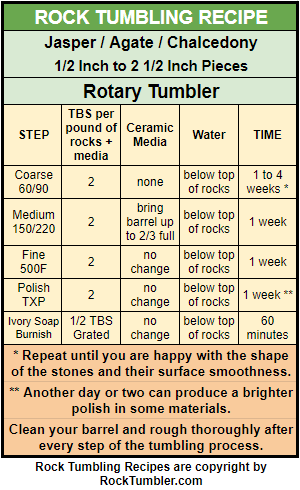
Rock Tumbling Recipe for Jasper, Agate and Other Chalcedony: Here is the recipe that we use for polishing these materials in a small rotary tumbler. It is a five-step recipe, but we often repeat the coarse grit step one or more times for higher quality results.
How to Tumble
Brown Jasper
We tumbled this brown jasper using our Tumbling Instructions for Jasper, Agate and Chalcedony. We encourage you to check out those detailed instructions. But, if you want a quick look, they are summarized in the accompanying chart.
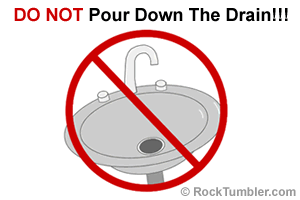
Please don't pour your rock tumbling waste water down a drain. It will harden in the drain and ruin your plumbing.
More Information About This Jasper
Many jaspers form when hot fluids, carrying dissolved silica, pass through porous materials - such as rhyolite (a volcanic rock), volcanic ash, or sediment. We believe that the banded pattern in this jasper was produced by the silicification of a fine-grained sediment. Different layers within the sediment had different porosities, and the fluid was able to penetrate more or less easily - depending upon the porosity.
We have noticed (with a microscope) tiny articulated and disarticulated shells within a few pieces of this material. Those shells and the layered structure of the rock are our reasons for suggesting that this jasper formed from the silicification of a sedimentary material.
Some pieces of this jasper have fractures, layers, and tiny cavities that are incompletely silicified. If you go outside on a sunny day, place a pound or two of this material on a flat surface, and look at sun-illuminated pieces from various angles, you will likely see tiny - but very bright - reflections of sunlight. If you look at the source of those flashes with a magnifying glass or microscope, you might find a tiny surface in the rock that is covered with a quartz druze. (A druze is a coating of tiny crystals on the walls of a fracture, inside of a cavity, or on the surface of a bedding plane separation.)
Customers also bought...
Large Ceramic Media

Small Ceramic Media

Standard Grit Kit



